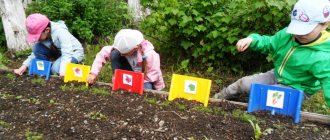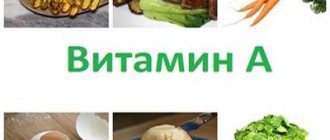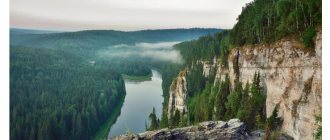Description of culture
It is difficult to find a person who does not know what onions look like, because they are distributed everywhere. True, some are interested in what family onions belong to. Garlic and all onions belong to the Liliaceae family, despite the fact that it is not a flower, but a herbaceous product from the garden.
The description of the onion will be brief - the plant consists of a head, which in shape and color of the husk resembles a turnip, familiar to ancient Russians. In fact, the fruit is a modified shoot, where the bottom is a shortened stem, its scales are something like bark.
Green feathers are leaves that are hollow inside. It produces plants and seeds, popularly called “nigella” (their dark color is so rich). Seeds are formed in an umbrella crowning a long hollow arrow fired with a bow. Outwardly, it resembles a green feather, but at the time of seed formation it becomes dense and fleshy.
Additional Information. Depending on the variety, the bulbs are round and elongated, flat and cigar-shaped. Many turnips are covered with yellow scales, but white, brown, dark purple and red ones are also found.
The culture is cold-resistant, capable of germinating at 2 degrees Celsius. For plant development, the optimal temperature is 18-20 degrees.
Onion cultivation is carried out in annual and biennial rotations, using nigella seeds, sets, selections or seedlings for propagation.
Since onions are a vegetable, turnips and feathers are eaten. The product is consumed by most people daily in raw, boiled, fried, or pickled form. The only thing that cannot be done without onions is desserts.
Characteristic
Onions are a biennial crop belonging to the class of monocots. Alliums are native to Afghanistan, Iraq and Turkmenistan, with a mountainous climate characteristic of these regions (low air pressure and humidity, hard rocks and soil rich in minerals, but devoid of organic matter). Later, breeders developed many varieties adapted for different climatic conditions.
For the onion family there is no clear distinction between organs. These plants are not divided into roots, shoots, and leaves. The reason for this is the gradual transition from one morphological part to another. The rhizome, transformed into a bulb, gives rise to a shoot that does not have a main stem, but is represented by a bunch of hard, erect leaves. Onions are grown to produce:
- Feather or greenery.
- Sevka - for the purpose of obtaining further planting material. As a rule, seedlings are planted in open ground before winter.
- Directly onions, the varieties of which are described in this material.
- For decorative purposes. Varieties and methods of growing ornamental onions are described here.
Generative organs capable of sexual reproduction mature only in the second year of growth.
Onion Facts: 11-20
11. According to Old English folklore, if the skin of an onion is thick, it means that a harsh or difficult winter is coming. Thin skin, on the contrary, means a mild winter.
12. New York City, which is known today as the Big Apple, was once known as the Big Onion. This is discussed in the book “1,000 Places to Visit Before You Die.” The author of the book is Patricia Schultz.
13. China is the world's largest producer of onions. The average annual onion production in China is 20,507,759 metric tons. India ranks second with 13,372,100 metric tons and America ranks third with 3,320,870 metric tons per year.
14. General Ulysses S. Grant sent a telegram during the American Civil War. Addressed to the War Ministry, it read: “I will not move my army without a bow.” As a result, three railway wagons loaded with onions were immediately dispatched.
15. It is believed that onions have antiseptic properties, so during the war they were actively used to heal wounds.
16. In the city of Blue Hill, Nebraska, there is a law - a rather strange law. According to this law, if a woman wears a large hat that would intimidate a timid man, she will be prohibited from eating onions. Interestingly, this law exists on the books!
17. The Greeks believed that eating onions increased strength, so athletes during the first Olympic Games in the 1st century AD ate onions.
18. In ancient India, onions were used as a diuretic. This means they consumed this vegetable for eye, heart, and joint health.
19. Peter Glazebrook - British farmer grew the world's largest onion in 2011. The bow entered the Guinness Book of World Records and weighed 18 pounds.
20. Onions are the 6th most popular vegetable crop in the world (in terms of annual production).
Onions are the enemy of dogs! Did you know that onions can weaken dogs' red blood cells and lead to anemia and, in severe cases, death? Keep onions away from your dogs!
Leaf structure
Onions are characterized by cone-shaped, cone-shaped, upright leaves, tapering towards the end and hollow inside. The sheet is protected from frost and lack of moisture by a loose wax coating. The color of the leaves depends on the level of light: the more sunlight the plant receives, the lighter the color of the feathers. In general, the color varies from light green to bluish-green and dark.
The leaves also vary in size and density. Towards the end of the growing season, the leaves become denser and acquire pronounced venation (in onion plants it is longitudinal-transverse). The densest leaves are those formed from the outermost open scales of the bulb. Multi-tiered onions have a different root system, which can be found in this material.
Onion leaves are cone-shaped, tapering towards the end and hollow inside.
Characteristics of the hero
Luka cannot be described as a person. An old man, quiet, kind, helpful, cunning, secretive - that's all. She doesn’t talk about herself, she’s keenly interested in others, she doesn’t react to evil words, she doesn’t judge others, she even feels sorry for them: “... Girl, someone needs to be kind... you need to feel sorry for people! Christ felt sorry for everyone and told us so... I’ll tell you - it’s time to feel sorry for a person... it happens well!..”
The conflict in interpretations of his image is that some of Luke’s stories are interpreted as a destructive lie, others as a gift of hope.
What did Luke lie about? That you can start a new life in Siberia? But so it was: in distant and rich Siberia, the fugitives found both shelter and the opportunity to live differently - the land here was free and free, those who worked did not suffer.
Or should the Actor’s story about the free hospital be considered an empty lie? She may be fiction, but Luka adds: “Just this: get ready for now! Refrain... pull yourself together and be patient..."
Luke’s philosophy is explained by his story about a righteous land, where everything is according to reason and justice. As long as a person believed in the righteous land, he worked, strengthened himself, “he did not lose his spirit.” And as the scientist told him that there was no such land, the man died...
(Ivan Moskvin in the role of Luka, from the age of twenty-eight he played the role in the Moscow Art Theater performances based on M. Gorky’s play “At the Depths”)
Luke, who has seen and experienced a lot, believes that one can be saved with a kind, kind and encouraging word. But not empty, but having a real basis. Only a person must want, find the strength to be saved.
Luka disappears, having completed his “mission”. He showed the way - he gave a “fishing rod” to the hungry. But is it his fault that the “hungry” has completely forgotten how to do something? And, in general, he doesn’t want to.
Gorky's nochlezhka is a “cave of philosophers,” not workers. Neither the cruel truth nor a dream can save them. Each inhabitant of the “cave” receives a peculiar pleasure from the way he lives - idle, without money, but not hungry and without worries.
Properties of culture
Onions are especially useful when eaten fresh, since some of the phytoncides evaporate during heat treatment. This component is a powerful antimicrobial substance that can even fight tuberculosis, cholera and typhoid.
Winter onions - care in spring
Onions are valued for their large healing chemical composition, which includes:
- vitamin set, where the main elements are B (1,2,6), C, E, PP;
- mineral salts (iron, phosphorus, potassium, etc.);
- enzymes, inulin, carotene;
- sugars in some varieties can contain up to 14% (a significant proportion is due to maltose and fructose);
- pantothenic acid.
On a note! Saponins, flavonoids, and proteins are also present. In addition to the ability to fight viruses and bacteria, the culture has other effects: wound healing, anti-burn, anti-sclerotic, hematopoietic, expectorant and tonic. Onions are used to treat hemorrhoids and get rid of worms.
Eating fresh onions daily helps:
- reduce blood sugar;
- establish water-salt metabolism;
- increase the tone of the gastrointestinal tract muscles and improve the secretion of glands;
- increase appetite;
- normalize libido.
Note! Bulb head is a good prophylactic against hypo- and avitaminosis. Nutritionists value the product for its low calorie content - 40 kcal/100 g.
Onion extract is used in pharmacology. Its presence can be found in the preparations “Alliglycer”, “Allylchep” and a number of dietary supplements. The juice of the vegetable helps remove baldness and seborrhea, and the benefits of onion masks are to prevent wrinkles.
Properties of other types of onions
| Name | Peculiarities |
| Leek | It contains less phytoncides than turnips, but has much more mineral salts. Therefore, the bactericidal effect is weaker, but the effect on the function of the digestive glands and liver is higher. Helps well with metabolic disorders and fatigue |
| Batun | Contains 2 times more ascorbic acid than onion. In pharmacology, drugs are made from batun to elasticize blood capillaries and reduce blood pressure. In Tibet, batun is included in recipes for fractures and furunculosis. The Chinese use Tatar onion as a sweatshop and energy product. |
| shallot | Judging by what vitamins are in onions and shallots, what is the effect of species on the human body, we can say that this variety is a complete analogue of turnips |
| Schnitt | In terms of composition, onions are the record holder for the content of ascorbic acid and mineral salts among all types. Therefore, it begins to act effectively on diseases immediately |
| Multi-tiered | Can be considered an analogue of a turnip, but can contain 2 times more vitamin C |
Each variety of onion is worthy of becoming an alternative to the traditional onion, not only in culinary recipes, but also in folk therapy, as a free “healer” from the garden. They all give a similar healing effect.
On the topic: methodological developments, presentations and notes
Trees, like all living things, have energy. Therefore, when a person communicates with a tree, an active exchange of energies occurs, contributing to the healing of the human body. At the same time, very va.
the importance of the properties of salt in working with preschoolers.
Forming children's ideas about the benefits and healing properties of birch, using the teacher's story, clarifying children's knowledge with the help of questions.
Consultation for parents of preschool children “The healing properties of plants of the Komi region.”
Although it’s the last month of summer, the guys and I are not discouraged, but continue to enjoy every warm day of August. And then on one of these days, watching the insects, we bent low to the grass.
Music greatly contributes to the healthy development of all the spiritual and physical powers of a child. Therefore, parents should be interested in ensuring that the child’s encounter with music takes place on time and on time.
Summary of educational activities with CHILDREN 6-7 YEARS OLD on cognitive development Enriching children's knowledge about the healing properties of tea and the traditions of Russian tea drinking. 1. Maintain children's interest in Fr.
Bottom line
Maxim Gorky's image of the wanderer Luke turned out to be very multifaceted and reflecting the main philosophical questions about life, love, principles and priorities of man.
And not only Luke - all the characters in one way or another reflect those who we meet in real life.
The writer managed to reflect entertaining philosophical and psychological ideas in his work :
- the playwright revealed all the ins and outs of the characters’ behavior and character;
- we always understand why the hero acts this way and not otherwise;
- the whole play is strong evidence that love, understanding and hope are necessary for a person, no matter who he is.
All of the above is important for a correct understanding of the work and simply situations happening to people around us, it teaches us to sympathize and correctly set life priorities.
Luke's relationship with other characters in the play "At the Lower Depths"
The characters relate to the old man in two ways:
- some (the thief Vaska Pepel, Actor, Anna, Nastya, Natasha) tell him with relief about their lives, confess and receive in response the necessary pity, sympathy and soothing statements;
- others (the cardmaker Bubnov, Satin, Baron, Kleshch) do not trust the stranger too much and talk to him briefly and skeptically.
One thing is for sure - no one remained indifferent to the appearance of such an extraordinary personality in such a dirty and doomed place.
After the sudden disappearance of the wanderer, the fate of some characters changed dramatically. The locksmith Kleshch's wife, Anna, died of tuberculosis, the Actor could not come to terms with the hopelessness of his life and hanged himself, Vaska Ash went to hard labor in Siberia because of an accidental murder, his dreams of an honest life with Natasha came to an end. The remaining heroes continued to while away their time in the shelter, but at the same time began to think about the meaning of their existence, their actions and the problems of those around them.
Preview:
SUMMARY OF NODS IN THE PREPARATION GROUP
EDUCATIONAL FIELD “COGNITION” ECOLOGY.
TOPIC: "USEFUL PROPERTIES OF ONIONS".
TEACHER: Zavarueva Irina Nikolaevna
GBOU "Gymnasium No. 1583 named after K. A. Kerimov" preschool department
1. Systematize children’s knowledge about: the beneficial properties of onions, the conditions necessary for onions to grow, the process of planting them at home, the selection of tools and materials for work and the sequence of labor actions.
- Improve dialogic speech.
- Fostering hard work and a desire to be useful.
Material: 1. Mnemonic table: for compiling a descriptive story about an onion: 1 – what is it?, 2 – shape, 3 – color, 4 – lips, 5 – nose, 6 – onion in section, 7 – hand, 8 – bed, 9 – collective farmer, 10 – basket, knife, 11 – spoon, plate, 12 – benefit (suitcase with a red cross);





